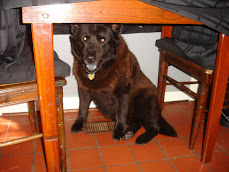
Today at the Birmingham Black Radio Museum I developed a unique identifier system for the collection. I began by looking at a system that is used at the Hoole Special Collection to see if it could be a good jumping off point to begin the development of one that would work for the collection. The Hoole system is made up of three parts, the first number is used for the identification of the type of material being cataloged, whether it is a photograph, recording, or manuscript. The second number identifies the collection name, like the Wade Hall Small Collection. The last number is the used to identify a specific item in the collection. There is also a fourth number, but it is only used if an item is more than one page long if it is a manuscript or if it is over one tape long if it is a recording. The final number for an item in the collection looks something like this 0003_000056_000001_0001. If I wear looking at this unique identifier, it would tell me all the basic information I would need to know, what kind of item is it, what collection does it belong to, and how long it is.
Using this as a jumping off point, my directed study buddy, Latoya, and I began brainstorming what kind of information would be important to include in the unique identifier for this collection. While talking with Bob Friedman, he informed me that he would like to see each radio station have its own collection, so we began the number with the four letter call sign of each radio station. The next piece of information that needed to be address in a unique identifier is the type of material being cataloged. The material type will be identified with a four digit number to correspond with each material type in the collection, manuscript, photograph, voice/ sound recording, newspaper clipping, and so on. Next, each decade will be broken down within the collection to make almost a mini collection within the larger one of the radio station. Bob asked if this could be done to make using the materials by year easier for anyone doing research. The unique identifier system at Hoole does not have any numbers that correlate with the year the item was created, but I believe that is because their collections are so far ranging that putting the year in the collection would not make sense or work for them. The last number in the collection will used to identify each item within each collection. This number will be eight digits long to ensure that the collection never outgrows the numbering system. There is also a final, four digit number that will be used only if an item has more than one page.
I think the most important thing I learned today while developing this numbering system was to really think about what types of materials you are trying to catalog and organize and then use that information to inform your system. If I had just used the same system as the one at Hoole, I would have had a hard time making it work for this collection and its specific needs. I think as we work more with the materials and prepare them for the creation of metadata, we might have to change the system a little, but as I see it now, I think it will work well with the collection and serve all the needs the collection will have for a unique identifier system.


No comments:
Post a Comment